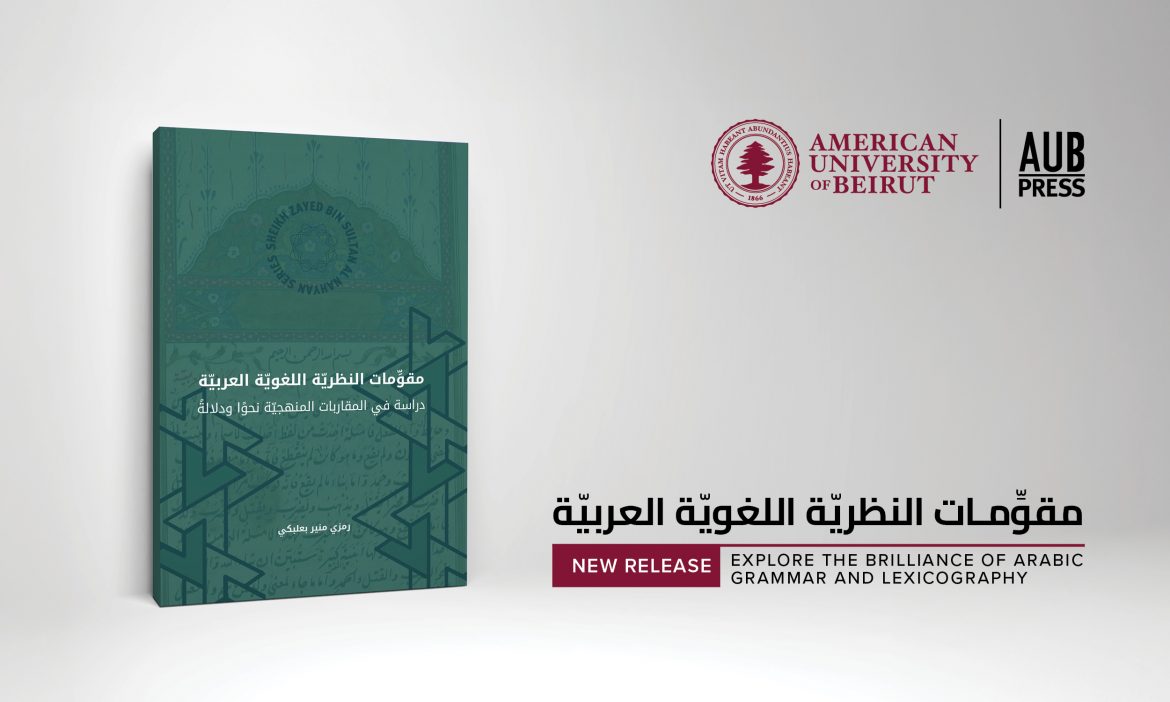The American University of Beirut (AUB) Press announced a new release in the Sheikh Zayed Bin Sultan Al Nahyan Series, under the Arabic and Islamic Texts and Studies subsection: Muqawwimāt al-Naẓariyya al-Lughawiyya al-ʿArabiyya. This work is an in-depth study by Dr. Ramzi Baalbaki on the theory of the Arabic language in grammar and dictionary. This new release allows readers to learn about the general linguistic theory governing Arabic grammar and lexicon in the early stages of writing, starting from the second century until the fifth century AH.
This book highlights the strength of Arabic linguistic theory in meeting its two key conditions: comprehensiveness and coherence. It examines how Arab grammarians have carefully considered the mental and contextual factors involved in communication between speaker and listener. The book also analyzes the theory’s ability to address formulas and combinations, whether commonly used or newly created, even if they fall outside typical usage.
Baalbaki explores how the linguistic code developed as linguists worked to study language following the expansion of vocabulary and the introduction of unfamiliar words. Their efforts focused on collecting, describing, analyzing, and standardizing linguistic phenomena. The book introduces five key grammatical concepts: action, analogy, estimation, reasoning, and origin. The author goes beyond mere description, demonstrating the coherence of these concepts and proving the theory’s ability to encompass and connect Arabic grammar rules. The analysis begins by exploring the relationship between pronunciation and meaning, drawing on the work of Sibawayh, the pioneer who first established grammatical theory in a structured, written form.
The book stands out for exploring linguistic phenomena beyond surface analysis, highlighting the unique flexibility of the Arabic language and its ability to convey the thoughts of speakers. This is all framed within structured principles derived from Arabic linguistic theory. The final chapter focuses on the semantic aspects of both grammar and lexicography. Baalbaki also examines anomalies in the Arabic language and how they are regulated within linguistic theory. He further explores the classification and organization of linguistic material across phonetic, morphological, and syntactic levels.
Muqawwimāt al-Naẓariyya al-Lughawiyya al-ʿArabiyya is an in-depth study by Dr. Ramzi Baalbaki on the theory of the Arabic language in grammar and dictionary. This book highlights the strength of Arabic linguistic theory in meeting its two key conditions: comprehensiveness and coherence. It examines how Arab grammarians have carefully considered the mental and contextual factors involved in communication between speaker and listener.
About AUB
Founded in 1866, the American University of Beirut bases its educational philosophy, standards, and practices on the American liberal arts model of higher education. A teaching-centered research university, AUB has more than 750 full-time faculty members and a student body of over 8000 students. AUB currently offers more than 140 programs leading to bachelor’s, master’s, MD, and PhD degrees. It provides medical education and training to students from throughout the region at its Medical Center that includes a full-service 365-bed hospital.
Stay up to date on AUB news and events.
aub.edu.lb |Facebook |X

